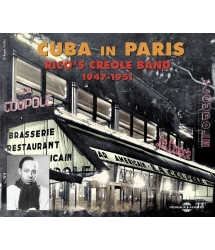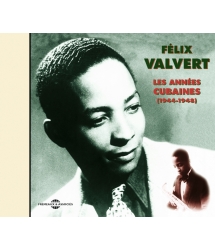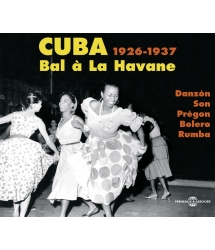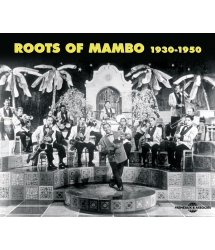- Our Catalog
- Philosophy
- Philosophers of the 20th century and today
- History of Philosophy (PUF)
- Counter-History and Brief Encyclopedia by Michel Onfray
- The philosophical work explained by Luc Ferry
- Ancient thought
- Thinkers of yesterday as seen by the philosophers of today
- Historical philosophical texts interpreted by great actors
- History
- Books (in French)
- Social science
- Historical words
- Audiobooks & Literature
- Our Catalog
- Jazz
- Blues
- Rock - Country - Cajun
- French song
- World music
- Africa
- France
- Québec / Canada
- Hawaï
- West Indies
- Caribbean
- Cuba & Afro-cubain
- Mexico
- South America
- Tango
- Brazil
- Tzigane / Gypsy
- Fado / Portugal
- Flamenco / Spain
- Yiddish / Israel
- China
- Tibet / Nepal
- Asia
- Indian Ocean / Madagascar
- Japan
- Indonesia
- Oceania
- India
- Bangladesh
- USSR / Communist songs
- World music / Miscellaneous
- Classical music
- Composers - Movie Soundtracks
- Sounds of nature
- Our Catalog
- Youth
- Philosophy
- News
- How to order ?
- Receive the catalog
- Manifesto
- Dictionnary











- Our Catalog
- Philosophy
- Philosophers of the 20th century and today
- History of Philosophy (PUF)
- Counter-History and Brief Encyclopedia by Michel Onfray
- The philosophical work explained by Luc Ferry
- Ancient thought
- Thinkers of yesterday as seen by the philosophers of today
- Historical philosophical texts interpreted by great actors
- History
- Books (in French)
- Social science
- Historical words
- Audiobooks & Literature
- Our Catalog
- Jazz
- Blues
- Rock - Country - Cajun
- French song
- World music
- Africa
- France
- Québec / Canada
- Hawaï
- West Indies
- Caribbean
- Cuba & Afro-cubain
- Mexico
- South America
- Tango
- Brazil
- Tzigane / Gypsy
- Fado / Portugal
- Flamenco / Spain
- Yiddish / Israel
- China
- Tibet / Nepal
- Asia
- Indian Ocean / Madagascar
- Japan
- Indonesia
- Oceania
- India
- Bangladesh
- USSR / Communist songs
- World music / Miscellaneous
- Classical music
- Composers - Movie Soundtracks
- Sounds of nature
- Our Catalog
- Youth
- Philosophy
- News
- How to order ?
- Receive the catalog
- Manifesto
- Dictionnary
LIVE RECORDINGS IN CUBA, 1992 (BOLÉRO, GUARACHA, MAMBO, CONGA, GUAJIRA & RUMBA)
Ref.: FA5389
Artistic Direction : FRANCOIS JOUFFA
Label : Frémeaux & Associés
Total duration of the pack : 1 hours 8 minutes
Nbre. CD : 1
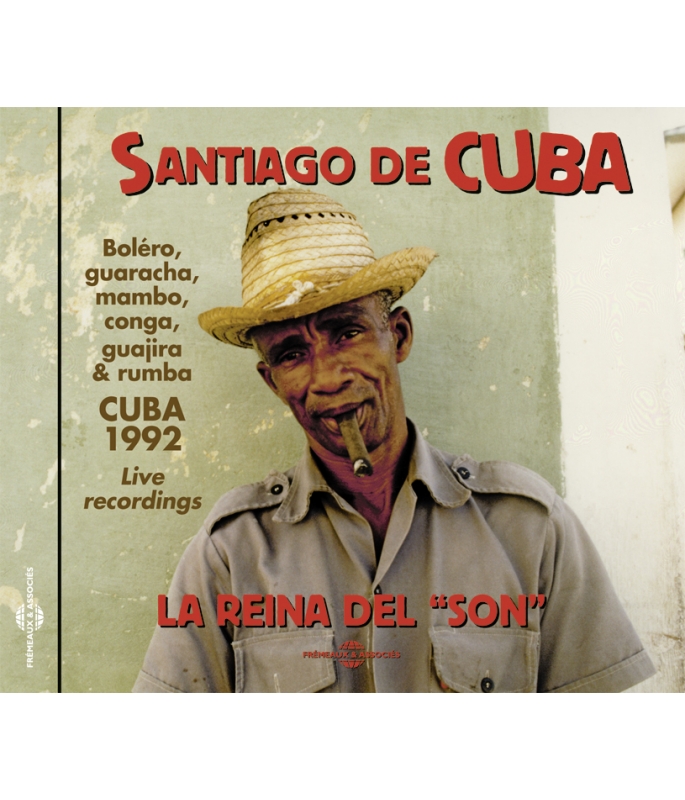
LIVE RECORDINGS IN CUBA, 1992 (BOLÉRO, GUARACHA, MAMBO, CONGA, GUAJIRA & RUMBA)
LIVE RECORDINGS IN CUBA, 1992 (BOLÉRO, GUARACHA, MAMBO, CONGA, GUAJIRA & RUMBA)
Four years before the musical adventure that led Ry Cooder in Havana to record the legendary “Buena Vista Social Club”, François Jouffa had recorded the most important singers and musicians of Santiago de Cuba, the country’s second city and the capital of son. The blending of African, European and American, but also Haitian, influences have made Santiago de Cuba’s music the embodiment of Cubanness, the best of which is here handed down to posterity thanks to François Jouffa. Patrick FRÉMEAUX
-
PisteTitleMain artistAutorDurationRegistered in
-
1Pensando En TiSepteto TurquinoNico Saquito00:06:451992
-
2Maria BelenSepteto TurquinoNico Saquito00:06:161992
-
3Bururu BararaSones de OrienteIgnacio Pineiro00:06:191992
-
4El PeluqueroSones de OrienteIgnacio Pineiro00:06:481992
-
5Santiago De CubaQuinteto de La TrovaCalixto Cardenas00:05:201992
-
6IrmaQuinteto de La TrovaReynaldo Prado00:05:351992
-
7Dulce EmbelesoSepteto Tipico OrientalMiguel Matamoros00:06:331992
-
8CocheroSepteto Tipico OrientalMarcelino Guerra00:04:111992
-
9RetornaAracelis Romero ChelySindo Garay00:02:351992
-
10Si Llego A BesarteAracelis Romero ChelyLuis Casa Romero00:02:291992
-
11ChristinitaCuarteto OrientePepe Sanchez00:03:251992
-
12Reclamo MisticoCuarteto OrienteMiguel Matamoros00:03:371992
-
13La GuantanameraConga Los HoyosJoseito Frenandez00:02:111992
-
14El ParaliticoConga Los HoyosMiguel Matamoros00:02:121992
-
15Pilon-Columbia-MasonConga Los HoyosMiguel Matamoros00:04:281992
Santiago de Cuba FA5389
Santiago de Cuba
LA REINA DEL “SON”
Boléro, guaracha, mambo, conga, guajira & rumba
Cuba 1992
Live recordings
CUBA
François Jouffa avait enregistré les chanteurs et musiciens les plus importants de Santiago de Cuba, la capitale du son, quatre ans avant l’aventure musicale à succès de Ry Cooder à La Havane. Ce guitariste californien, compositeur entre autres de la magnifique B.O. du film «?Paris Texas?» de Wim Wenders, avait retrouvé des légendes oubliées comme le chanteur d’origines chinoise et africaine Ibrahim Ferrer, le pianiste mambo-jazz Rubén González et, surtout, celui qui allait trouver la gloire internationale en fin de vie, le guitariste (avec son armónico de 7 cordes) et chanteur Compay Segundo, 90 ans. Produit en 1996 par Cooder et Nick Gold, l’album «?Buena Vista Social Club?», avec tous ces vieux artistes cubains sublimes, reçut le Grammy du meilleur disque tropical de l’année, et se vendit à plus de cinq millions d’exemplaires. Le film documentaire, réalisé ensuite par Wim Wenders (en 1998), fit découvrir au monde entier tous ces personnages attachants. Mais, revenons à François Jouffa. C’est lors d’un concert de salsa, au New Morning à Paris, qu’il retrouva son confrère François Missen. Les deux François s’étaient beaucoup croisés professionnellement dans les années 1960 et 1970. L’un était reporter à Europe n°1, l’autre reporter à Radio Luxembourg. Missen, futur lauréat des prix Pulitzer et Albert Londres, souffrait de cicatrices intérieures sensibles pour avoir été otage en Afghanistan. Il raconta comment il avait pu retrouver la paix intérieure au contact du peuple cubain qui l’avait accueilli. Et, connaissant le travail d’ethnomusicologue de Jouffa qui se déplaçait sur tous les continents pour enregistrer des musiques en voie de disparition, il lui conseilla de se rendre à Santiago de Cuba, là où perdurait une tradition musicale préservée par des vieux musiciens. Il lui expliqua qu’il y avait urgence à les enregistrer avant que la rock music des radios américaines et, surtout, le rap qui fascinait déjà les jeunes Cubains n’écrasent à jamais cette culture spécifique. Missen actionna pour les Jouffa (Sylvie avec son Nikon argentique et François avec son Nagra magnétique) toute sa chaine de l’amitié franco-cubaine. C’était «?la période spéciale?», au moment des privations quand l’Union soviétique redevenue Russie n’apportait plus d’aide économique au pays de Fidel Castro. Mais, tous, ambassadeurs, ministres, militaires, guides, chauffeurs, interprètes, musiciens, chanteurs, tous mirent leur bonne humeur au service de ce projet. Le voici : près de soixante-neuf minutes de rares talents, avec les sept meilleurs orchestres de Santiago de Cuba. Un pur bonheur !
Patrick Frémeaux
«?S’il y a quelque chose, dans la musique cubaine, qui soit dépourvu de tout mystère, c’est son lien direct avec certaines des racines originelles même dans le cas où celles-ci s’entretissent au point de constituer un organisme nouveau (…). Reste le fait intéressant que le premier maître de chapelle de la cathédrale de Santiago dont le nom ait été recueilli par l’histoire, un demi-siècle exactement après la Découverte, était cubain, fils d’Indienne et de Castillan.?»
Alejo Carpentier in «?La musique à Cuba?», Gallimard, 1985.
«?Mambo est le pluriel du mot bantou diambu signifiant à la fois «?conversation, discours, sujet, motif?». Le mot désigne aussi une certaine manière de danser la rumba columbia et l’expression Qué diambo ? ou Qué mambo ? signifie à Cuba, Qu’y a-t-il ? (…). Le mot conga viendrait du bantou Kunga, signifiant «?chanson?» ou «?tumulte?» (…). L’une des trois congas, la tumbadora, est appelée bass conga à New York. À Cuba, elle est aussi nommée mambisa, de Mambises, nom des révolutionnaires qui se battirent contre l’Espagne durant la guerre d’Indépendance, et, en Oriente, timba, mot également synonyme de rumba.
Isabelle Leymarie in «?Du tango au reggae. Musiques noires d’Amérique latine et des Caraïbes?», Flammarion, 1996.
«?À l’origine, le son descend des montagnes. On l’appelle d’ailleurs souvent son montuno, montagnard. Ce genre musical apparaît au XIXe siècle dans la sierra Maestra, la chaîne de moyennes montagnes qui entoure le port de Santiago de Cuba. Refuge de nègres marrons (esclaves en fuite), cette région est aussi peuplée d’agriculteurs venus d’Espagne, en particuliers des îles Canaries et d’Andalousie. On retrouve dans le son la forme antiphonale des chants africains : le chœur lance un refrain (composé de quelques mots, voire d’un seul), et le soliste lui répond en improvisant. Ce refrain reçoit le nom de montuno. L’instrument roi du son est le tres (prononcer «?tress?»), une petite guitare à trois cordes doubles de métal, aux possibilités harmoniques limitées mais qui permet de vigoureuses improvisations rythmiques. La formation se complète avec une botija (cruche d’argile dans laquelle on souffle pour émettre un son de basse), et plusieurs percussions : le güiro, le bongo, les claves, ces deux bâtons entrechoqués qui donnent le rythme de base (un-deux-trois, un-deux), cellule rythmique qui se retrouve dans nombre de musiques d’Afrique et des Antilles?».
François-Xavier Gomez in «?Les musiques cubaines, Librio musique, E.J.L., 1999.
SANTIAGO DE CUBA : LA REINA DEL SON
Ville portuaire fondée au début du XVIe siècle par les armées espagnoles qui allaient se lancer à la conquête du continent américain, Santiago de Cuba a conservé tout le charme d’un village colonial. Capitale de l’Oriente, seconde ville du pays après La Havane, bâtie aux pieds de la sierra Maestra sur des terrasses naturelles qui descendent vers la mer des Caraïbes, elle est aussi «?le berceau de la révolution?» selon une citation de Fidel Castro.
Dénommée «?la reine du son?», Santiago s’est enrichie, au fil des siècles, d’un métissage culturel : des Aborigènes aux Espagnols, des Français aux Africains, en passant aussi par des influences asiatiques.
La musique cubaine, fusion de percussions africaines et de guitares espagnoles, enrichie des instruments de toute l’Amérique latine comme les bâtonnets en bois claves et autres maracas (mais d’origine africaine), sans oublier le piano français et les cuivres des fanfares européennes et même une trompette chinoise utilisée dans les groupes de conga de Santiago. Le creuset de la cubanité musicale est le carnaval annuel de la fin juillet, où l’on défile en dansant la rumba et autres rythmes africains lourds de diverses percussions.
À l’angle des rues José Maria Heredia et San Felix, la fameuse Casa de la Trova est l’antre historique de la créativité des troubadours. La Trova étant un style de chansons traditionnelles romantiques. Au départ, le son cubain était le médium des fermiers guajiros qui propageaient les nouvelles, guitare à la main. Le boléro est également originaire de Santiago pour donner la sérénade à la bien-aimée aux accents d’opéras italiens et de romances françaises. Plus tard, le mambo, le cha-cha-cha puis la salsa (via New York) partiront à la conquête du monde à partir de Cuba.
SEPT GROUPES,
QUINZE MORCEAUX
Durée totale du CD : 68’55
SEPTETO TURQUINO
1 - Pensando en ti. 6’43
J’ai pensé que ce nouvel amant pourrait t’éloigner de mon esprit et calmer ma douleur. Mais ces caresses étrangères me tuent. Ce ne sont pas tes baisers ni tes lèvres…
2 - Maria Belen. 6’13
Maria Belen, je n’en peux plus. Dis-lui qu’il ne revienne plus, sinon je le briserai.
SONES DE ORIENTE
3 - Bururu Barara. 6’12
Si tu veux réjouir ton cœur et que, dans ton âme, la tristesse diminue, écoute cet orchestre qui ne fait pas de bruit. Et, ensuite, si tu veux voir clair, bois un verre de rhum.
4 - El Peluquero. 6’46
Que Dieu bénisse le coiffeur ! Le coiffeur qui déguise ma femme, me la déguise sept fois par semaine.
QUINTETO DE LA TROVA
5 - Santiago de Cuba. 5’18
Tu es le motif de mon admiration. Depuis le port, on voit la baie. Et, sur tes plages, une belle splendeur, le va et vient des vagues. Santiago de Cuba, la reine du son. Tes belles palmeraies. Amour et chaleur…
6 - Irma. 5’32
Irma, jolie femme qu’un jour mes yeux ont vue. Ta bouche, baiser je veux. Tes lèvres, mordre aussi…
SEPTETO TIPICO ORIENTAL
7 - Dulce Embeleso. 6’32
Avec ton baiser tentateur, de toi je suis tombé amoureux. Embrasse-moi, mon amour. Embrasse-moi, viens et embrasse-moi à nouveau.
8 - Cochero. 4’09
Arrête, cocher, sinon je vais mourir. Arrête, sinon je me jette au sol. Regarde, cocher, danse et amuse-toi.
ARACELIS ROMERO CHELY y su groupo acompañante Septeto Tipico Oriental
9 - Retorna. 2’33
Reviens, ma vie. Je t’attends irrésistiblement. Reviens vite me calmer, car je me meurs. Reviens ma vie…
10 - Si llego a besarte. 2’27
Si j’arrive à t’embrasser. Donne-moi un baiser et oublie que tu m’as embrassée. Je t’offre ma vie si tu me la demandes.
CUARTETO ORIENTE
11 - Cristinita. 3’23
Je te salue, femme et lueur sans pareil qui fait même renaître les fleurs fanées. Ton nom, petite Cristina, est très doux. Ton visage est angélique. Tu es l’être le plus aimable créé par la nature.
12 - Reclamo Mistico. 3’34
Dis-moi si tu es libre comme l’est le vent. Dis-moi que tu ne m’aimes plus, que tu m’oublies déjà. Dis-moi que tu n’as même plus une pensée pour moi, ni une espérance qui me serait due.
CONGA LOS HOYOS
13 - Guantanamera. 2’10
Une Guantanamera est une jolie femme de la ville de Guantánamo, à l’est de Santiago de Cuba. Jouée, ici, en instrumental par des congueros, composée en 1928 par José Fernández Diaz, c’est la chanson cubaine la plus connue dans le monde. Cette guajira-son, danse campagnarde entrainante, s’extasie sur une nature idéalisée. Elle a été adaptée par tous les folksingers américains, puis européens, dans les années 1960 (Joe Dassin en France).
14 - El Paralitico. 2’11
15 - Conga : Pilon-Columbia-Mason. 4’29
Le conga, d’origine africaine (bantoue), est un tambour de 90 cm de haut mais de différentes largeurs - on peut en jouer à plusieurs - qui est apparu au XVIIIe siècle à Cuba. Le tambour quinto pour jouer en solo, au son plus aigu, est appelé aussi le primero. De même que le fameux tres est
appelé secundo ou, tout simplement, conga. Celui au son le plus grave est la tumba ou salidor. Le joueur de conga est un conguero. Les rythmes des congas entraînent, dans les rues, les participants des carnavals qui suivent les musiciens en dansant.
Production et enregistrements effectués à Santiago de Cuba par François Jouffa en juillet et août 1992. Avec la complicité de Artex (Jorge Carlos Vidal) et la Casa del Caribe (José Millet) à Santiago de Cuba, de Publicitur (Susana Ojeda) à La Havane, de Havanatour (Unas Liutkus) à Paris. Merci, surtout, au journaliste français François Missen (Trinidad-Paris) d’avoir partagé, avec nous, sa passion cubaine et d’avoir organisé cette expédition en nous mettant en contacts avec officiels et artistes de Cuba.
Merci également à Fabienne Egal pour sa connaissance de l’espagnol.
Photos argentiques : Sylvie Jouffa (avec Nikkormat EL).
Texte : François Jouffa. Traduction anglaise : Susie Jouffa.
Montage magnétique : Laurent Yonker (1998).
Mixage numérique : Christophe Hénault, Art & Son Studio, Paris (2012).
Avertissement : Pour conserver l’authenticité de ces morceaux traditionnels, j’ai préféré utiliser des méthodes d’enregistrements d’un autre âge. A l’heure du tout numérique, parfait mais froid, j’ai choisi intentionnellement de travailler avec un fameux ancien magnétophone de luxe (le Nagra suisse, modèle IV-S), deux excellents micros retirés du marché (les Sennheiser electronic de type MKH 416T), et de la bonne vieille bande magnétique made in Germany (BASF), introuvable aujourd’hui. Ce lourd et robuste matériel digne d’un musée du son, peut, quand on sait le faire fonctionner avec amour, restituer la rondeur et la chaleur de ces musiques ancestrales en voie de disparition. Les connaisseurs apprécieront, j’espère, la différence de couleur. Merci à Claude Colombini et à Patrick Frémeaux d’y avoir été sensibles chez Frémeaux & Associés.
François Jouffa
CUBA
François Jouffa has recorded the most important singers and musicians of Santiago de Cuba, the capital of son, four years before the successful musical adventure of Ry Cooder in Havana. The Californian guitarist -who is the composer, among other wonderful soundtracks, of «Paris Texas» by Wim Wenders- rediscovered forgotten legends such as the singer with Chinese and African origins Ibrahim Ferrer, the pianist of mambo-jazz Rubén González and, most of all, the one who would meet international fame at the end of his life, at 90 years old, the guitarist (with his 7-string armónico) and singer Compay Segundo. Produced in 1996 by Cooder, the album «Buena Vista Social Club», with all those sublime old Cuban artists, received the Grammy for Best Tropical Latin Performance. Over five million copies were sold. Afterwards, the documentary film directed by Wim Wenders (in 1998), did show to a larger pubic all these endearing characters. But, let’s go back to François Jouffa. It was during a salsa concert at the New Morning in Paris that he joined his colleague François Missen. The two François had met a lot professionally in the 1960s and 1970s. One was a reporter for Europe N° 1 French radio, the other was reporter for Radio Luxembourg. Missen, future laureate of the Pulitzer and Albert Londres Prizes, had kept sensitive inside scars from having been held hostage in Afghanistan. He used to describe how he had found inner peace anew in contact with the Cuban people who had welcomed him warmly. And, being acquainted with the work accomplished by the ethnomusicologist François Jouffa, who used to travel on every continent to record endangered music, he advised him to go to Santiago de Cuba, where was perpetuated a musical tradition preserved by old musicians. He explained him it was urgent to record them before the rock music of the American radios, especially rap that was already fascinating the young Cubans, wipes out forever this specific culture. Missen set in motion for the Jouffas (Sylvie with her argentic Nikon camera and François with his magnetic analog Nagra) his network of Franco-Cuban friends. This was during the «special period», a period of hardship when the Soviet Union that became Russia had ceased to provide its economic aid to the country of Fidel Castro. But all of his friends, ambassadors, ministers, servicemen, guides, drivers, musicians, singers, all of them did show their willingness to serve this project. Here it is: nearly seventy-nine minutes of rare talents, with the seven best orchestras of Santiago de Cuba. Pure bliss!
Patrick Frémeaux
SANTIAGO DE CUBA: LA REINA DEL SON
Port city founded in the early sixteenth century by the Spanish armies that were about to conquer the American continent, Santiago de Cuba has conserved the charm of a colonial village. Capital of the Oriente, second largest city after Havana, built at the bottom of the Sierra Maestra on natural terraces leading down to the Caribbean Sea, it is also «the cradle of the revolution» according to a quote from Fidel Castro. Called «the queen of son», Santiago has enriched itself, over the centuries, thanks to a cultural melting pot of Aboriginal, Spanish, French, African and even Asian influences.
Cuban music is a fusion between African percussions and Spanish guitars, enriched with instruments coming from the whole Latin America world like the claves, a percussion instrument made of two wooden sticks, and other maracas (but of African origin), not to mention the French piano and the brass of the European fanfares or the Chinese trumpet used in conga bands of Santiago. The crucible of Cubanness is the annual carnival music of late July, where one parade while dancing the rumba and other African rhythms rich in various percussions.
At the corner of Jose Maria Heredia and San Felix streets, the famous Casa de la Trova is the historical lair of the troubadours’ creativity. La Trova is a traditional style of romantic songs. Initially, the Cuban son was the medium of the farmers guajiros who used to spread the news, while playing the guitar. The bolero also has its origins in Santiago and was used to serenade the beloved-one with its tones swinging between the Italian operas and the French ballads. Later, the mambo, the cha-cha-cha and afterwards the salsa (via New York) set out to conquer the world from Cuba.
SEVEN GROUPS, FIFTEEN PIECES
Total playing time: 68’55
SEPTETO TURQUINO
1 - Pensando en ti. 6’43
I thought this new lover could keep you away from my mind and ease my pain. But the caresses of a stranger are killing me. These are neither your kisses nor your lips...
2 - Maria Belen. 6’13
Maria Belen. I can’t stand it anymore. Tell him not to return otherwise I will break him.
SONES DE ORIENTE
3 - Bururu Barara. 6’12
If you want to rejoice your heart and have sadness decrease in your soul, listen to this band that makes no noise. And then, if you want to have a clear sight, drink a glass of rum.
4 - El Peluquero. 6’46
God bless the hairdresser! The hairdresser who disguises my wife, disguises her seven times a week.
QUINTETO DE LA TROVA
5 - Santiago de Cuba. 5’18
You are the subject of my admiration. From the port, one can see the bay. And, on the beaches, a beautiful splendour, the coming and going of the waves. Santiago de Cuba, the queen of son. Your beautiful palm groves. Love and warmth ...
6 - Irma. 5’32
Irma, pretty woman one day my eyes have seen. Your mouth, I want to kiss. Your lips, I want to bite...
SEPTETO TIPICO ORIENTAL
7 - Dulce Embeleso. 6’32
With your tempter kiss, of you I fell in love with. Kiss me, my love. Kiss me, my love. Kiss me, come here and kiss me again.
8 - Cochero. 4’09
Stop, coachman, otherwise I will die. Stop, or I throw myself on the ground. Look, coachman, dance and have fun.
ARACELIS ROMERO CHELY y su groupo acompañante Septeto Tipico Oriental
9 - Retorna. 2’33
Come back, my life. I am irresistibly waiting for you. Come back soon in order to calm me down, for I am dying. Come back my life...
10 – Si llego a besarte. 2’27
If I can kiss you. Give me a kiss and forget that you have kissed me. I offer you my life if you request it.
CUARTETO ORIENTE
11 - Cristinita. 3’23
I greet you, woman and incomparable light that even have the faded flowers to reborn. Your name, little Cristina, is very soft. Your face is angelic. You are the most pleasant being created by Nature.
12 - Reclamo Mistico. 3’34
Tell me if you are as free as the wind. Tell me you don’t love me anymore, that you are already forgetting me. Tell me you don’t even have a thought for me, nor a hope that would be due to me.
CONGA LOS HOYOS
13 - Guantanamera. 2’10
A Guantanamera is a pretty woman from the city of Guntánamo, at the east of Santiago de Cuba. Here played in instrumental by congueros, this song composed in 1928 by José Fernández Diaz is the most well-known Cuban song in the world. The guajira-son, swinging folksy dance, raves about an idealized nature. It has been adapted by all American folksingers, and then by the Europeans, in 1960s.
14 - El Paralitico. 2’11
15 - Conga: Pilon-Columbia-Mason. 4’29
The conga, of African origin (Bantu), is a drum of 35 inches in height but of different widths -it is a multiplayer instrument- that appeared in the eighteenth century in Cuba. The quinto drum, to be played in solo, with a more acute sound, is also called primero. The famous tres is called secundo or, simply, conga. The one with the lowest and deepest sound is the tumba or salidor. The conga player is called a conguero. In the streets, the conga rhythms lead the carnivals participants to follow the dancing musicians.
Production and recording in Santiago de Cuba: François Jouffa (July-August 1992).
Archival silver prints photographs: Sylvie Jouffa (with Nikkormat EL).
Text: François Jouffa. English translation: Susie Jouffa.
Analog editing: Laurent Yonker (1998).
Digital mastering: Christophe Hénault, Art & Son Studio, Paris (2012).
We thank Jorge Carlos Vidal (Artex) and José Millet (the Casa del Caribe) in Santiago de Cuba, Susana Ojeda (Publicitur) in Havana, Unas Liutkus (Havanatour) in Paris.
Thank you especially to the French journalist François Missen (Paris-Trinidad) for having shared with us his Cuban passion and for having organized this expedition by putting us in contact with officials and artists in Cuba. And thank you to Fabienne Egal for her knowledge in Spanish.
Nota Bene: In order to preserve the authenticity of these traditionnal pieces, I have decided to use methods of recording that can nowadays appear as archaic. In a world where everything tends to become digital, faultless and cold, I intentionally chose to work with a notorious old luxury tape recorder (the Nagra from Switzerland, model IV-S), two excellent microphones that have now been removed from the market (the electronic Sennheiser of type MKH 416 T), and with the good old recording magnetic tapes «made in Germany» (BASF). Handled with loving care this heavy but solid recording equipment, worthy of being kept in a sound museum, restores the rich round tones and the warmth of these ancestral musics that are about to become extinct. Connoisseurs will appreciate, I hope, this difference of colour. Thanks to Claude Colombini and Patrick Frémeaux for having shared that sensitivity at Frémeaux & Associés.
François Jouffa
GROUPS, BANDAS, MUSICIANS, SINGERS AND INSTRUMENTS
SEPTETO TURQUINO
1 - Pensando en ti (Genero son).
2 - Maria Belen (Genero guaracha son).
Autor : Nico Saquito.
Integrantes : Rolando Ferrer (director, contrabajo y voz), Jorge Ferrer (tumbadora), Jorge Maturell (bongoes y voz), Carlos Sanos (maracas y voz), Anibal Avila (trompeta), Osnel Odit (guitarra y voz), Aracelio Guerra (tresy y voz).
SONES DE ORIENTE
3 - Bururu Barara (Genero bolero son).
Autor : Ignacio Piñeiro.
4 - El Peluquero (Genero guaracha).
Autor : Nico Saquito.
Integrantes : Oswaldo Calderin (bajo), Fernando Dewar (tres), Guillermo Dinza (guitarra), Armando Delfin (trompeta), Manuel Collazo (bongoes), Jonas Vinent (cantante), Alcides Gamboa (cantante), Evelio Ferrera (cantante).
QUINTETO DE LA TROVA
5 - Santiago de Cuba (Genero bolero son).
Autor : Calixto Cardenas.
6 - Irma (Genero bolero son).
Autor : Reynaldo Prado.
Integrantes : Reynaldo Prado (cantante y maracas), Gerves Bordes (guitarra), Cesar Hechavarria (tres), Adolfo Agulera (bajo), Eulises Sanchez (bongoes).
SEPTETO TIPICO ORIENTAL
7 - Dulce embeleso (Genero bolero son).
Autor : Miguel Matamoros.
8 - Cochero (Genero Guaracha).
Autor : Marcelino Guerra.
Integrantes : Fernando Masso (director y tres), Geronimo Martinez (cantante), Osmar Troba (guitarra y vocalista), Yuri Almenares (guitarra), Milian Carderon (bajo), Eduardo Calzado (bongoes), Romarico Carbonell (cantante).
ARACELIS ROMERO CHELY y su grupo acompañante Septeto Tipico Oriental
9 - Retorna (Genero bolero).
Autor : Sindo Garay.
10 - Si llego a besarte (Genero bolero).
Autor : Luis Casa Romero.
CUARTETO ORIENTE
11 - Christinita (Genero bolero).
Autor : Pepe Sanchez.
12 - Reclamo Mistico (Genero bolero).
Autor : Miguel Matamoros.
Integrantes : Omar Corrales (guitarra acompañante), Alejandro Almenares (guitarra prima), Alfredo Alonso (maracas y voz segunda), Felix Dupuy (clave y voz prima).
CONGA LOS HOYOS
13 - La Guantanamera (Bolero).
Autor : Joseito Fernandez.
14 - El Paralitico (Bolero).
Autor : Miguel Matamoros.
15 - Pilon-Columbia-Mason (Conga).
Interpretes : Sebastian Herrera (director), Felix Bandera (percusión), Rey Salazar (fondo), Miguel Beltran (fondo), Santiago Miyarez (campana), Nestro Herrera (conga), Ramon Camacho (quinto), Juan Laporte (campana), Miguel Rizo (fondo), Jorge Portuondo (fondo), Onislides Garbey (requinto), Juan Palacio (conga), Anamis Guerrero (fondo), Francisco Andriol (fondo), Miguel Herrera (pilon), Mariano Creach (corneta).
Quatre ans avant l’aventure musicale qui mena Ry Cooder à La Havane pour enregistrer le légendaire «?Buena Vista Social Club?», François Jouffa avait enregistré les chanteurs et musiciens les plus importants de Santiago de Cuba, seconde ville du pays et capitale du son. Le métissage entre influences africaines, européennes et américaines, mais aussi haïtiennes, a fait de la musique de Santiago de Cuba l’expression incarnée de la cubanité, dont François Jouffa parvient à transmettre l’apogée.
Patrick Frémeaux
Four years before the musical adventure that led Ry Cooder in Havana to record the legendary “Buena Vista Social Club”, François Jouffa had recorded the most important singers and musicians of Santiago de Cuba, the country’s second city and the capital of son. The blending of African, European and American, but also Haitian, influences have made Santiago de Cuba’s music the embodiment of Cubanness, the best of which is here handed down to posterity thanks to François Jouffa.
Patrick Frémeaux
CD SANTIAGO DE CUBA , LA REINA DEL SON PRODUIT PAR FRANCOIS JOUFFA © Frémeaux & Associés 2012 (frémeaux, frémaux, frémau, frémaud, frémault, frémo, frémont, fermeaux, fremeaux, fremaux, fremau, fremaud, fremault, fremo, fremont, CD audio, 78 tours, disques anciens, CD à acheter, écouter des vieux enregistrements, albums, rééditions, anthologies ou intégrales sont disponibles sous forme de CD et par téléchargement.)
